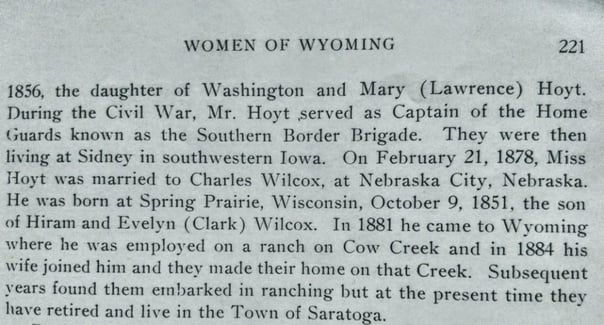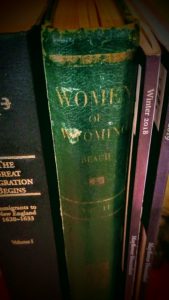 In my house, there’s an old book that stands guard against the march of time. It’s not any great work or an impressive tome, that’s for sure, as it’s pretty humble in title and origin. However, it still endures – and much like a singular nomad on my Costco bookshelf, it spends its days between the works of Robert Charles Anderson and my collection of Mayflower Silver Books and issues of the Mayflower Descendant. Nevertheless, this book – which I have taken to calling “Old Green” – has its own unique story, as she was once the prized possession of my great-great-grandmother Mary (Hoyt) Wilcox. (Even now I have to believe Mrs. Wilcox keeps a watchful eye on it from the Great Beyond.) You see, truth be told, if our home was ever to (God forbid) fall prey to any disaster, man-made or otherwise, I am ‘bound’ by some celestial edict to rescue “Old Green.” It seems silly to say so, but I count it among those irreplaceable things, and among those things with a life of their own, serendipitously placed by our ancestors for safe-keeping.
In my house, there’s an old book that stands guard against the march of time. It’s not any great work or an impressive tome, that’s for sure, as it’s pretty humble in title and origin. However, it still endures – and much like a singular nomad on my Costco bookshelf, it spends its days between the works of Robert Charles Anderson and my collection of Mayflower Silver Books and issues of the Mayflower Descendant. Nevertheless, this book – which I have taken to calling “Old Green” – has its own unique story, as she was once the prized possession of my great-great-grandmother Mary (Hoyt) Wilcox. (Even now I have to believe Mrs. Wilcox keeps a watchful eye on it from the Great Beyond.) You see, truth be told, if our home was ever to (God forbid) fall prey to any disaster, man-made or otherwise, I am ‘bound’ by some celestial edict to rescue “Old Green.” It seems silly to say so, but I count it among those irreplaceable things, and among those things with a life of their own, serendipitously placed by our ancestors for safe-keeping.
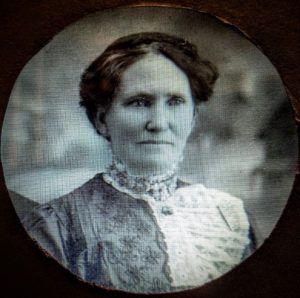 This book, forthrightly entitled Women of Wyoming,[1] exists for me like a messenger from my “not-too-distant” past, and as some sort of genealogical merit badge offered by Grandma Wilcox. The old book’s spine is still strong – much as I imagine Grandma Wilcox’s to have been – but its “hunter-gatherer” green binding is more Hogwarts[2] than Oxford. The old book does still have a way of catching my eye from any point in the room – watching me as I go about my day. I often wonder if my great-great-grandmother would have wanted me to have her old book. (I sure hope she hadn’t meant for it to go to Aunt Hazel[3] – I never would have learned as much about the family if it had.)
This book, forthrightly entitled Women of Wyoming,[1] exists for me like a messenger from my “not-too-distant” past, and as some sort of genealogical merit badge offered by Grandma Wilcox. The old book’s spine is still strong – much as I imagine Grandma Wilcox’s to have been – but its “hunter-gatherer” green binding is more Hogwarts[2] than Oxford. The old book does still have a way of catching my eye from any point in the room – watching me as I go about my day. I often wonder if my great-great-grandmother would have wanted me to have her old book. (I sure hope she hadn’t meant for it to go to Aunt Hazel[3] – I never would have learned as much about the family if it had.)
Women of Wyoming was written in the very late 1920s, and as a great friend of mine (and one not at all interested in genealogy) would say, it was written to give the old women of the day something “to crow” about. “Old Green” was written as a collection of biographical sketches about somehow notable (???) women who figured in the fostering of the Wyoming territory. And while ostensibly written about the lives of these stalwart ladies, it seems that its true purpose was to laud the accomplishments of the ladies’ somewhat self-absorbed husbands…
[While] ostensibly written about the lives of these stalwart ladies, it seems that its true purpose was to laud the accomplishments of the ladies’ somewhat self-absorbed husbands…
Mary (Hoyt) Wilcox passed away in 1930, and sometime before the 1950s her book had made its way into the basement bookshelves (and workshop library) of her grandson Frank White Lee.[4] His mother, Mary’s daughter, had died young, so Frank had been raised largely by the Wilcox family. No doubt when Mary died Frank felt a strong compulsion to save “the old green book” – knowing of its importance to his grandmother. As a little boy I was introduced to the book by my mother, Frank’s daughter,[5] who eventually procured or deftly pilfered it for her own safekeeping. (In my family, the clever pilfering of things with genealogical value is considered a skill ... if not a demi-virtue.) And, needless to say, I knew that it would fall upon me one day to do the very same – to make the book my own.
Honestly, though, growing up I could never quite figure out what the big deal was about “Old Green.” I mean as a kid I thought it was way cool that it showed my great-great-grandparents’ picture in it as they related to a real life Wyoming stagecoach. Yet as a ten-year-old it all did seem a bit of a big to-do about nothing. It wasn’t until I became interested in genealogy that I returned to Old Green (at that time lodged near my Guide to Aquarium Fishes) and began to see just what it was I was supposed to see in that old book – family names. You see, Mary (Hoyt) Wilcox, while treated in that book as an accessory to the accomplishments of her husband Charles, was afforded a brief description of her own ancestry.
Even now, I don’t know that it is any big deal – but that being said, Mary did give me two jumping off points in my nascent interest in the study of my family’s history. As my interest in the subject grew, I kept thinking, “So who are these people, these Hoyts[6] and Lawrences[7]? What was Mary trying to tell me? I found myself needing to know more about just who these people were and where they had come from. These questions were the start of quite the genealogical journey. I have to say, though (without any disrespect to my Hoyt cousins), that while I found the Hoyt family extremely interesting,[8] it was the tales of regarding my Lawrence ancestors (like the one below) that really drove my interest, and incurred in me the deepest respect:[9]
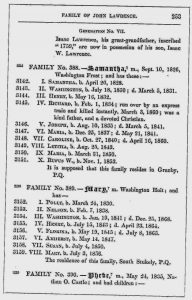 “…The family of Isaac Lawrence endured some of the severest hardships, so well known to the inhabitants of Vermont. Mrs. Lawrence has said that she lived for ten months without seeing the face of any other woman; and that for awhile one season the only food used by the family was dried pumpkins and the little moldy flour the children scraped from the inside of a barrel that had been wet.” [10]
“…The family of Isaac Lawrence endured some of the severest hardships, so well known to the inhabitants of Vermont. Mrs. Lawrence has said that she lived for ten months without seeing the face of any other woman; and that for awhile one season the only food used by the family was dried pumpkins and the little moldy flour the children scraped from the inside of a barrel that had been wet.” [10]
Now I don’t think it fair to go into much in the way of detail about any of my Hoyt and Lawrence ancestors. After all, this blog post is about that “particular book” on a shelf: you know, the one that gets left behind – and sits there decade after decade with a purpose all its own. No, this is only a post about “Old Green.” Suffice to say, though, that these Hoyts and Lawrences have proven to be amazing people (not unlike your own ancestors…) enduring incredible hardships as they vacillated between the courage to uphold the newly formed ideals of the American colonies and a strong loyalty to the crown. (I have always been a sucker for a Loyalist!)
Somehow, Mary had to tell me this. Maybe she knew in her heart of hearts that Old Green would go on to have a life of its own after she’d passed away. Maybe she didn’t care any about (though I’m sure she took great pride in) a biographical piece purporting to be about Wyoming’s women – or one whose actual intent was to display the enterprises of “their men” in a vigorous light. Whatever her reasons were, she knew that she had to get those names, her family names, in print for someone to see, for someone down the road to read, and maybe for someone to remember. She knew that “Old Green” would be a way to make that happen.
So Old Green sits and waits for the next generation, and indeed for its next pilfering custodian (wink). I have followed Mary’s trails and done my best to help her to be remembered, and to help others coming down the line to remember her Hoyts and Lawrences. Whether any of us succeed at being effective with the accomplishments of any family history at all is anybody’s guess. I guess it can only be more wisely left to some distant and future “Mary” (or Jeff!) down the road to decide that success – when an old green book may be summoned up, and the names of Hoyt and Lawrence will be remembered once more, and again.
Notes
[1] Cora M. Beach, Women of Wyoming (Privately printed, 1927).
[2] Hogwarts is a reference to the fictional school of Harry Potter, a character from the works of J.K. Rowling.
[3] Hazel Vesta (Bickerstaff) Wilcox (1887–1973), Mary (Hoyt) Wilcox’s daughter-in-law.
[4] Frank White Lee (1908–1988).
[5] Yvonne (Lee) (Record) Guerry (1935–2018).
[6] Mary’s father was Washington Hoyt (ca. 1809–1886).
[7] Her mother was Mary (Lawrence) Hoyt (1810–1890).
[8] Due to my interest in the Civil War and in General William Tecumseh Sherman, whose mother Mary was a member of the Hoyt family: Mary (Hoyt) Sherman (1787–1852).
[9] In this instance, referring to Isaac Lawrence Jr. (1737–1794) and his wife Mary (Brown) Lawrence (1742–1795), grandparents of Mary (Hoyt) Wilcox.
[10] Robert Means Lawrence, Historical Sketches of Some Members of the Lawrence Family… (Boston: Rand Avery, 1888), p. 48.
Share this:
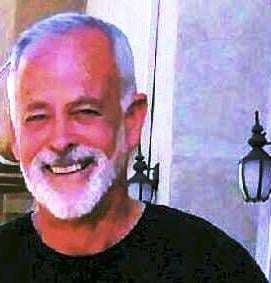
About Jeff Record
Jeff Record received a B.A. degree in Philosophy from Santa Clara University, and works as a teaching assistant with special needs children at a local school. He recently co-authored with Christopher C. Child, “William and Lydia (Swift) Young of Windham, Connecticut: A John Howland and Richard Warren Line,” for the Mayflower Descendant. Jeff enjoys helping his ancestors complete their unfinished business, and successfully petitioned the Secretary of the Army to overturn a 150 year old dishonorable Civil War discharge. A former Elder with the Mother Lode Colony of Mayflower Descendants in the State of California, Jeff and his wife currently live with their Golden Retriever near California’s Gold Country where he continues to explore, discover, and research family history.View all posts by Jeff Record →
